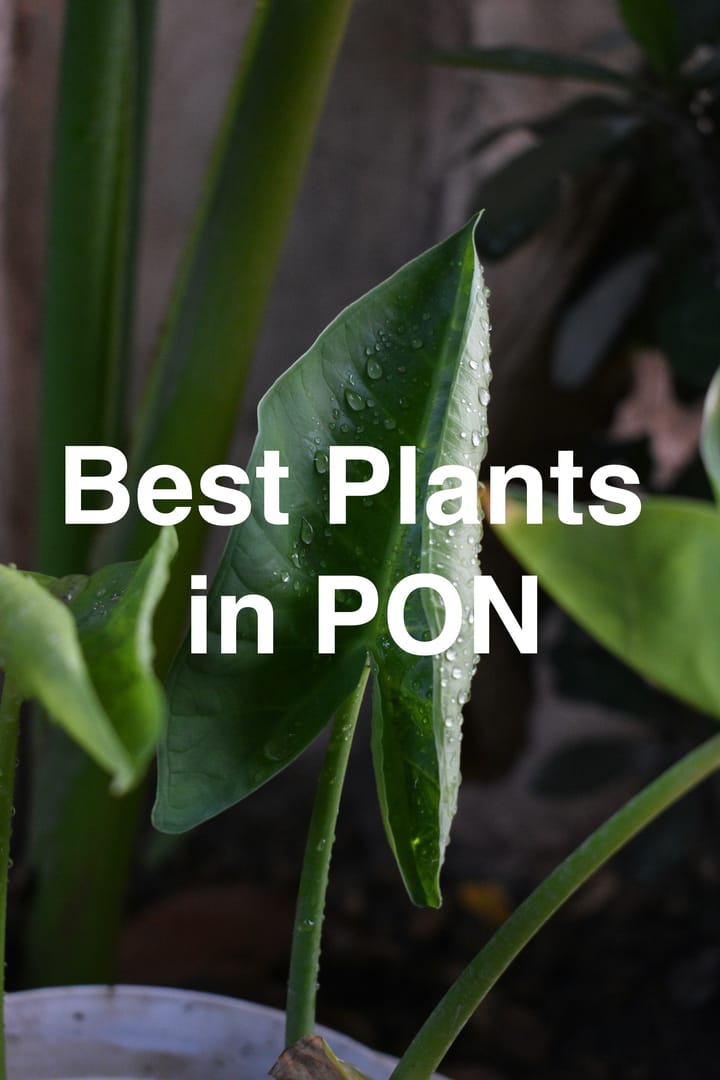Gardening Basics
Gardening offers a plethora of benefits. From the joy of watching something grow under your care to the convenience of fresh vegetables just a few steps away.
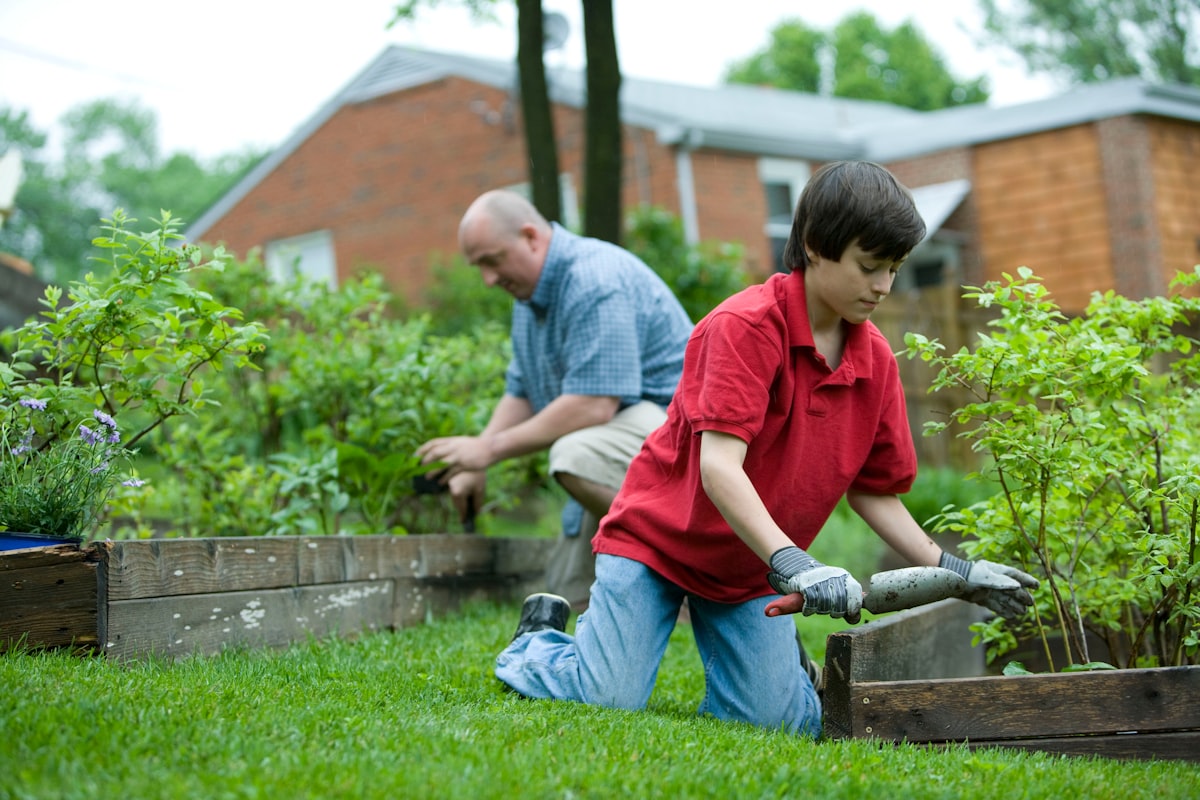
Commencing your gardening journey can feel a monumental task. But with the right basics in hand, it’s an extremely fulfilling undertaking.
Equipping yourself with a solid understanding of gardening essentials can transform an intimidating endeavor into a manageable and enjoyable one.
Selecting the right spot for your garden is critical. It affects everything from the type of soil you’ll be working with to the amount of sunlight your plants will receive.
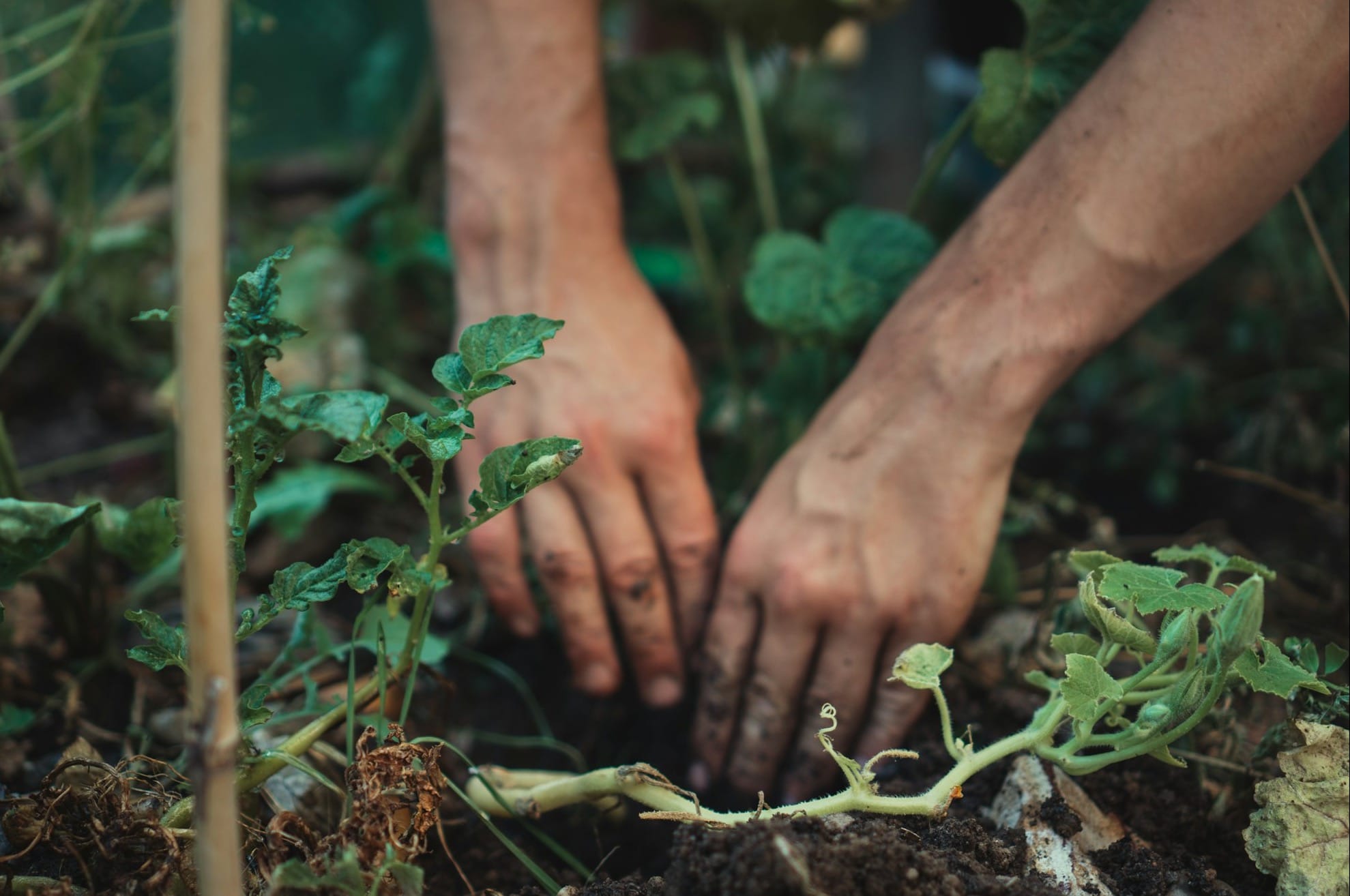
Consider factors such as sunlight exposure, accessibility of water, and protection from elements and wildlife.
Once the location is set, preparing the soil becomes your next big step. Rich, nourishing soil is the foundation of a thriving garden.
This involves possibly amending your soil with organic materials to improve its quality and fertility.
To ensure a successful harvest, careful planning and understanding of your environment are essential.
The right location, climate knowledge, and thoughtful design lay the foundation for your garden’s productivity.
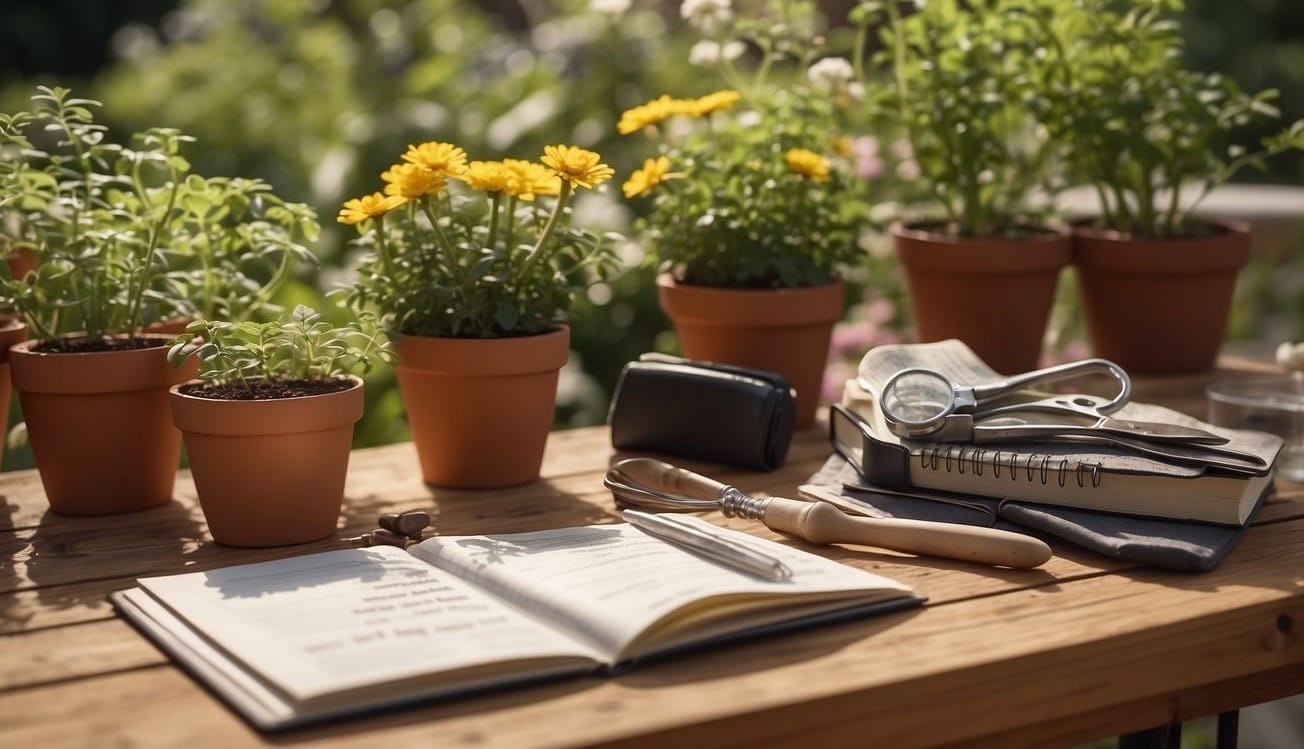
Understanding Your Climate
Your garden’s success depends greatly on the climate. Familiarize yourself with your gardening zone to know which plants will thrive and learn the local last frost date to optimize planting times.
| Gardening Zone | Expected Features | Planting Considerations |
|---|---|---|
| 3-5 | Cold, shorter growing season | Hardy vegetables, frost-tolerant |
| 5-7 | Moderate with some extremes | Broader plant selection, longer growing season |
| 8-10 | Warmer, longer growing season | Heat-tolerant plants, possibility of year-round gardening |
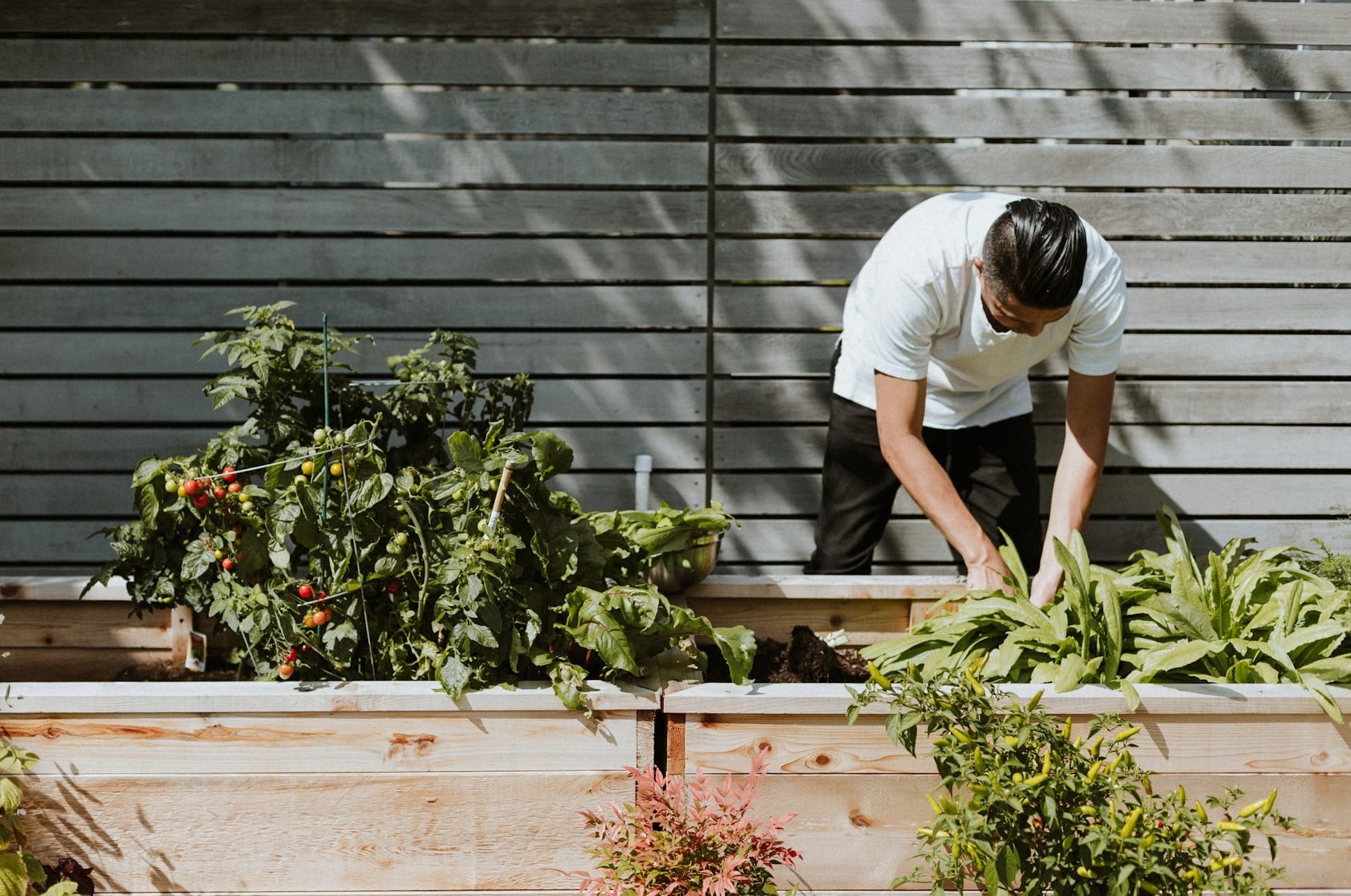
Choosing a Garden Location
Selecting the right spot is crucial for the health of your plants. Look for a site that receives 6-8 hours of sun daily, as most vegetables need ample sunlight.
Ensure the location is near a water source for ease of irrigation.
- Full Sun: At least 6 hours, necessary for tomatoes, peppers.
- Partial Shade: Suitable for lettuce, spinach.
Consider the light and water needs:
| Full Sun | Partial Shade | Water Source Proximity |
|---|---|---|
| 6-8 hours daily | Less than 6 hours daily | Accessible for easy watering |
Garden Design Basics
Design your garden with intent, keeping in mind the space you have and the sunlight distribution. Raised beds (4'x4' or 4'x8') can be a good option for beginners, and allow for better soil control.
- Space: A 10'x10' plot is a manageable size.
- Raised Beds: Correlate with ease of maintenance and soil quality improvement.
Soil Preparation
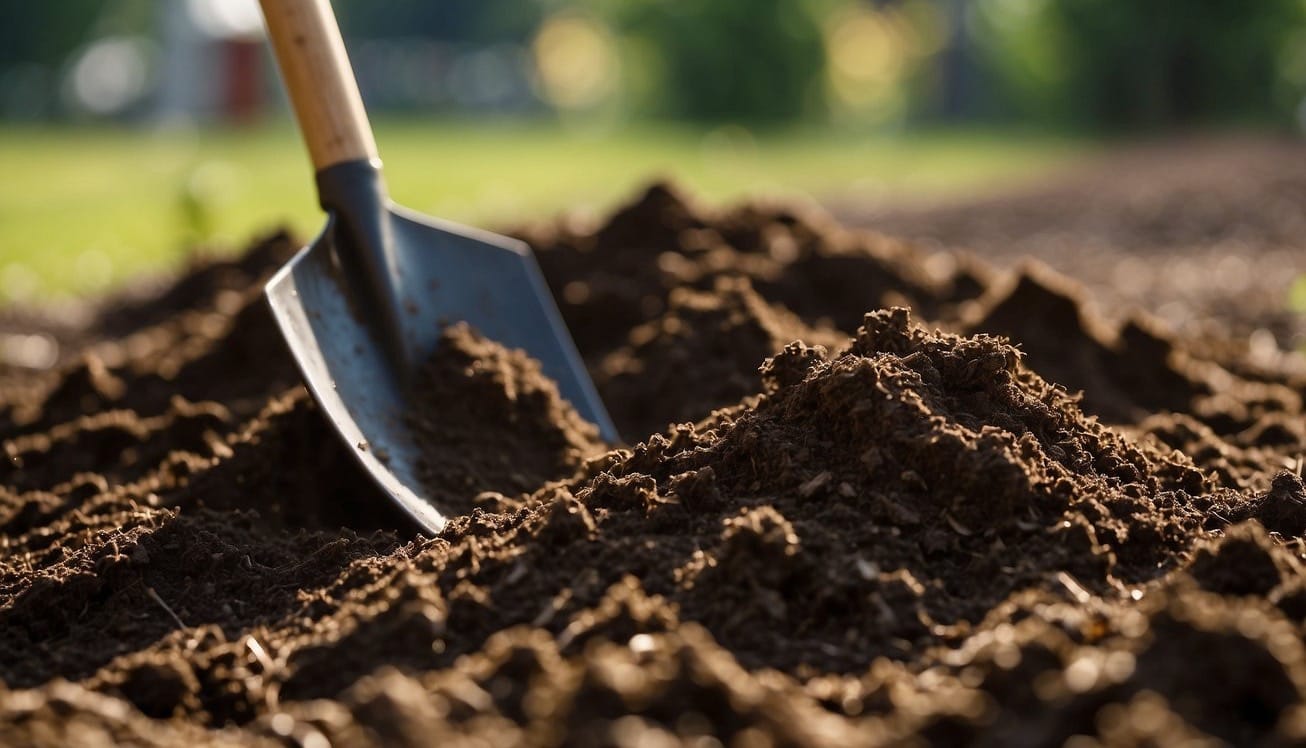
Before planting your garden, giving attention to soil preparation paves the way for healthy plant growth.
Proper soil prep involves both an understanding of your soil’s current condition and knowing the soil type you’re working with.
Testing and Amending Soil
Testing Your Soil: A soil test is your first step. This can reveal the pH level and nutrient profile of your soil, including key elements like nitrogen, phosphorus, and potassium.
Once you have these results, you’ll know what amendments to make.
- Amending Your Soil: Based on the soil test, you may need to increase acidity or alkalinity, or add nutrients.
- For example, if nitrogen is low, incorporating a nitrogen-rich fertilizer will be beneficial.
- Organic matter like compost or aged manure can enrich the soil, improving its structure and nutrient content.
Types of Soil and Their Importance
Understanding your soil type is crucial as different types require different care:
- Clay Soil: Rich in nutrients but may need organic matter to improve aeration and drainage.
- Sandy Soil: Drains well but may struggle to retain nutrients and moisture. Adding organic matter or mulch can help.
- Loam: This is an ideal garden soil that’s a balanced mix of sand, silt, and clay.
When working with potting soil, remember it’s typically designed for containers and may not be suitable for in-ground use.
In any case, preparing your beds by digging or tilling to a depth of 8-12 inches will ensure your soil is loose and aerated for planting.
Plant Selection
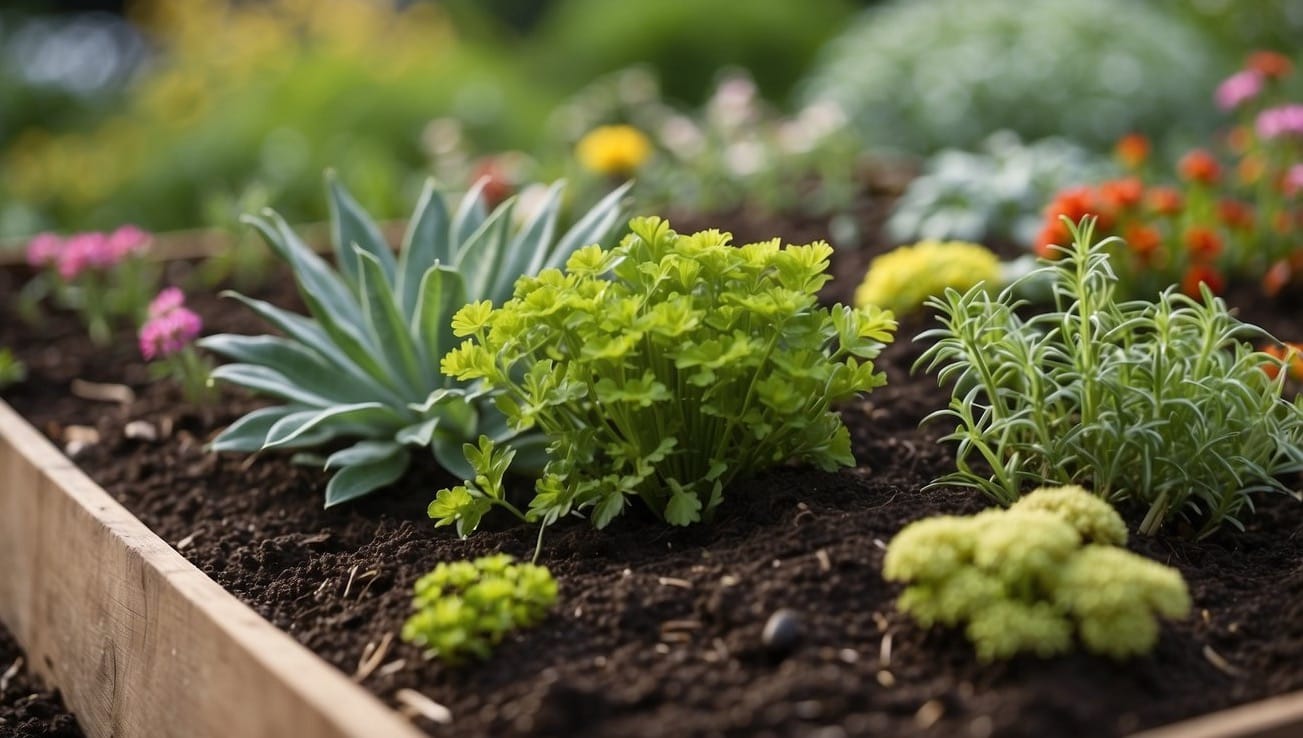
When you embark on a gardening journey, the plants you select will define your garden’s character.
Your choices between annual and perennial plants, the types of vegetables to grow, and the selection of flowers all play a pivotal role in the garden’s success and aesthetic.
Annuals vs. Perennials
Annual plants are those which complete their life cycle in one growing season. They are ideal for adding vibrant color and variety to your garden every year. Some popular annuals include:
- Petunias
- Marigolds
- Zinnias
On the other hand, perennial plants live for more than two years, often growing back each spring from their rootstock.
Perennials can provide a consistent structure and form to your garden. Essential perennials to consider:
- Roses
- Lavender
- Peonies
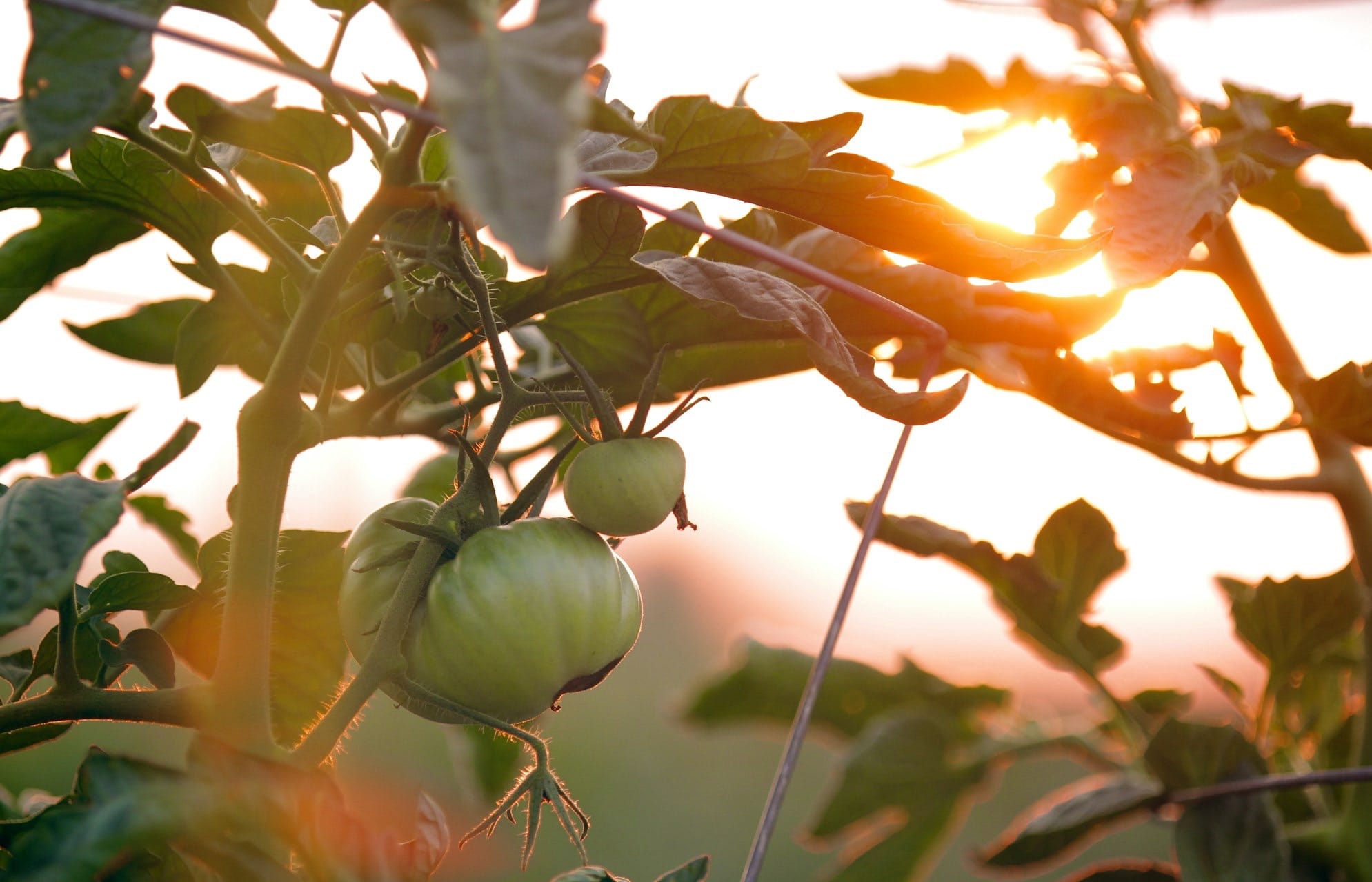
Choosing Vegetables for Your Garden
When planning your vegetable garden, think about the space available and the amount of sunlight your garden receives.
Some vegetables are easier for beginners and are more likely to yield a substantial harvest. Look for vegetable seeds or seedlings that are:
- Easy to grow: such as lettuce, radishes, carrots, and tomatoes.
- High-yield: like zucchini, peppers, and beans.
- Continual harvest: prefer herbs and leafy greens, which can be picked continuously.
Selecting the Right Flowers
Your choice of flowers can bring color, fragrance, and pollinators to your garden.
When choosing, it’s important to consider:
- Flowering time: to ensure a succession of blooms throughout the seasons.
- Sunlight needs: some flowers like full sun, while others prefer shade.
- Soil conditions: make sure the flowers you choose can thrive in your garden’s soil.
Consider flower seeds and plants that are suited to your climate and soil conditions for best results. Popular picks often include:
- Sun-loving: such as sunflowers, daylilies, and coneflowers.
- Shade-tolerant: like hostas, hydrangeas, and ferns.
Planting Techniques
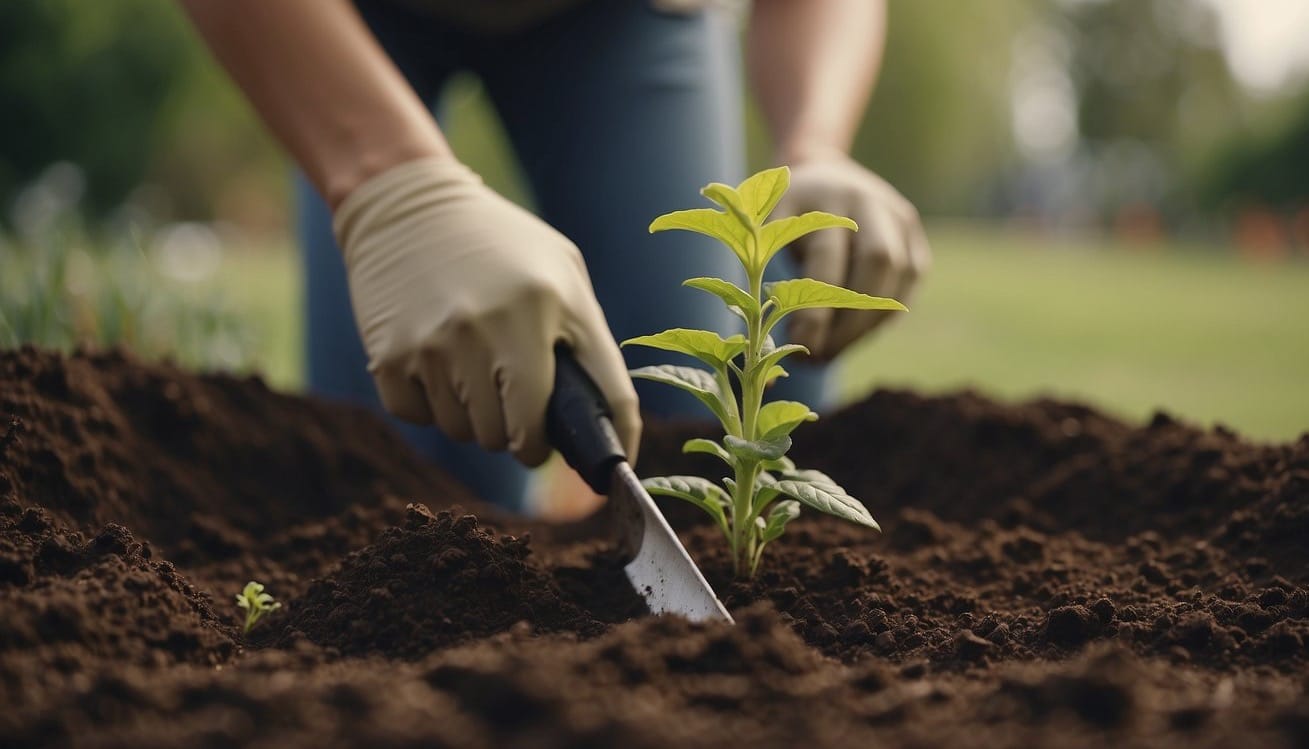
When establishing your garden, understanding the correct planting techniques is crucial to give your plants the best start. Here’s how to effectively sow seeds directly into the soil or transplant seedlings to your garden.
Sowing Seeds Directly
When to Sow: Choose to sow seeds directly when the soil has warmed to the ideal temperature for the seeds you are planting. Many vegetables like beans, peas, and root crops prefer to start where they will grow to maturity.
The Process:
- Prepare the Bed: Ensure the soil is loose and free of clumps or stones.
- Plant at Proper Depth: A general rule is to plant seeds at a depth of two to three times their width.
- Spacing: Use the seed packet as a guide for spacing between seeds. If instructions are not available, aim for 2-3 inches apart for small seeds and a bit more for larger seeds.
- Watering: Provide a gentle water flow to moisten the soil without displacing the seeds.
Transplanting Seedlings
Preparing Seedlings: Before transplanting, harden off your seedlings by gradually exposing them to outdoor conditions over several days.
Transplanting Steps:
- Dig the Hole: Make it twice as wide as the root ball of your seedling.
- Remove from Container: Gently tap the container to loosen the soil and carefully lift the seedling without pulling on the stem.
- Positioning: Place the seedling in the hole so that the top of the root ball is level with the soil surface.
- Filling In: Backfill the hole with soil and gently press down to eliminate air pockets.
- Watering: Water thoroughly to settle the soil around the roots.
Garden Care and Maintenance

To keep your garden vibrant and productive, you need to establish routine maintenance practices. These include effective watering, consistent pruning, and diligent pest and weed management.
Watering and Irrigation
Proper watering is crucial for garden health. Your garden requires an inch of water per week, either from rainfall or irrigation.
Employ a soaker hose or drip irrigation system for efficient watering that minimizes evaporation and reduces the spread of disease by keeping foliage dry.
- Morning Watering: Watering in the early morning reduces water loss due to evaporation and helps prevent fungal diseases.
- Avoid Over-watering: Excess water can suffocate plant roots, so ensure your soil drains well and adjust your watering schedule according to rainfall.
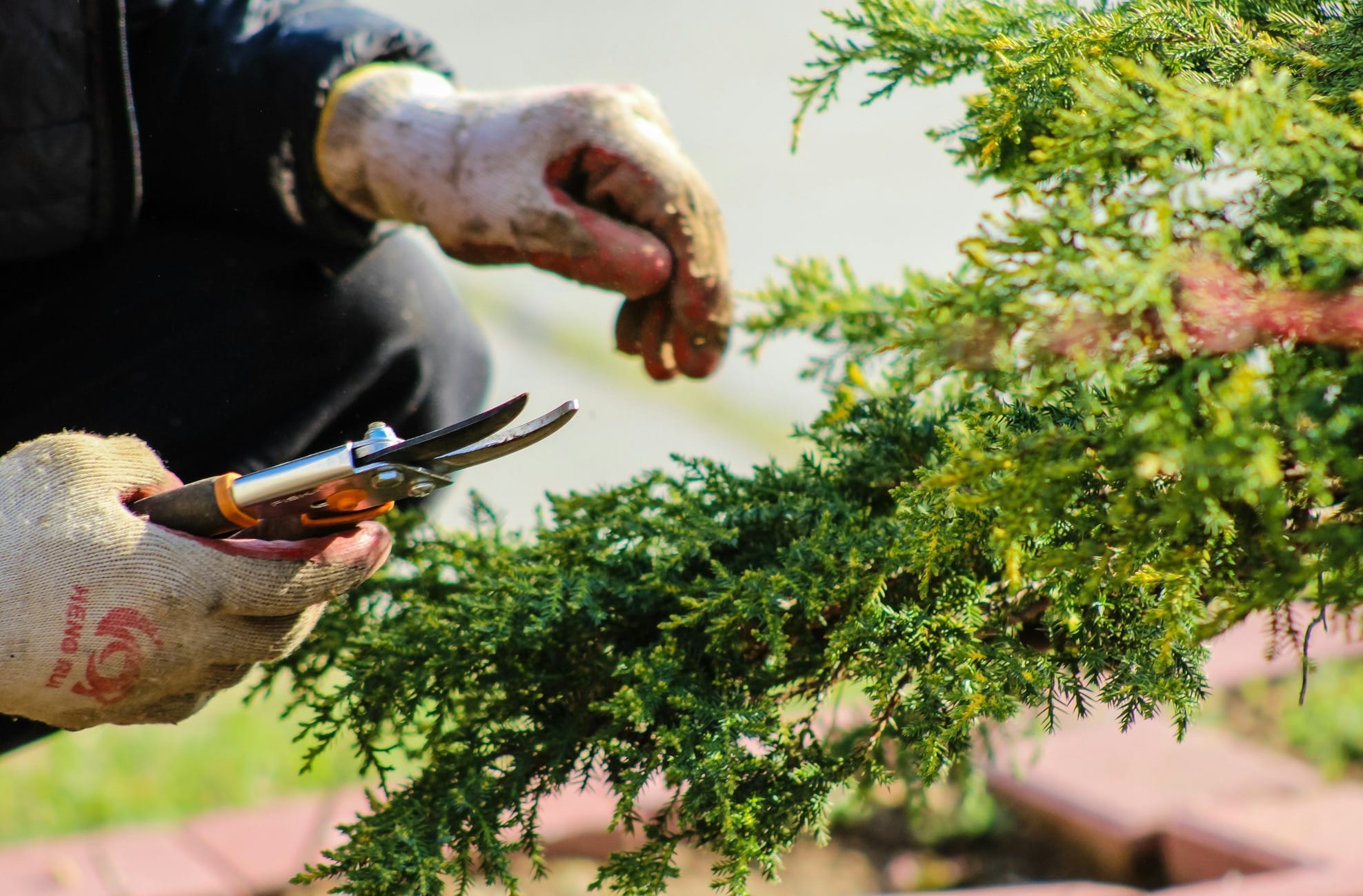
Pruning and Deadheading
Pruning and deadheading are vital to promote healthy plant growth and abundant blooms.
- Pruning: Remove dead or diseased wood, and thin out crowded areas to improve air circulation.
- Deadheading: Regularly remove spent flowers to encourage more blooms and prevent unwanted seed dispersal.
- Timing: Prune in late winter or early spring when plants are dormant, and deadhead throughout the growing season as necessary.
Controlling Weeds and Pests
Combat weeds and garden pests in a proactive manner to protect your garden's wellbeing.
- Mulching: Apply a layer of mulch to suppress weed growth and retain soil moisture.
- Hand-pulling: Remove weeds by hand before they set seed to reduce future weed issues.
- Pest Control: Monitor plants regularly for pest activity. Introduce beneficial insects, like ladybugs, or use organic pesticides when necessary, always following the manufacturer’s instructions.
- Fertilizer: Use fertilizer judiciously to nourish plants without encouraging rampant weed growth or pest infestations.
Gardening Tools and Equipment

When you venture into gardening, having the right tools and equipment is essential for both ease and success. Here’s a quick guide to some fundamental items you should have.
Hand Trowel: Your go-to tool for planting, transplanting, and potting. Its sturdy handle is vital for comfort and efficiency.
Rototiller: This is a powerful ally for larger gardens. It helps in breaking up soil and mixing in compost or fertilizer, saving you time and energy.
| Type | Purpose |
|---|---|
| Leaf Rake | Gathering leaves and light debris |
| Garden Hoe | Weeding and cultivating soil |
| Long-Handled Shovel | Digging, lifting, and moving soil |
For more delicate work, such as pruning or shaping plants, always have a pair of Pruning Shears on hand. Their sharp blades make clean cuts that can help prevent plant diseases.
Your toolkit should also include a Leaf Rake. Unlike heavier rakes, the leaf rake's long tines are more flexible, making it ideal for collecting leaves without damaging your grass or beds.
Remember that proper care of your tools will extend their life and usefulness. Clean them after each use and store them in a dry place to prevent rust.
With these tools, you’re equipped to tackle almost any garden task with confidence.
Harvesting and Enjoying Your Garden
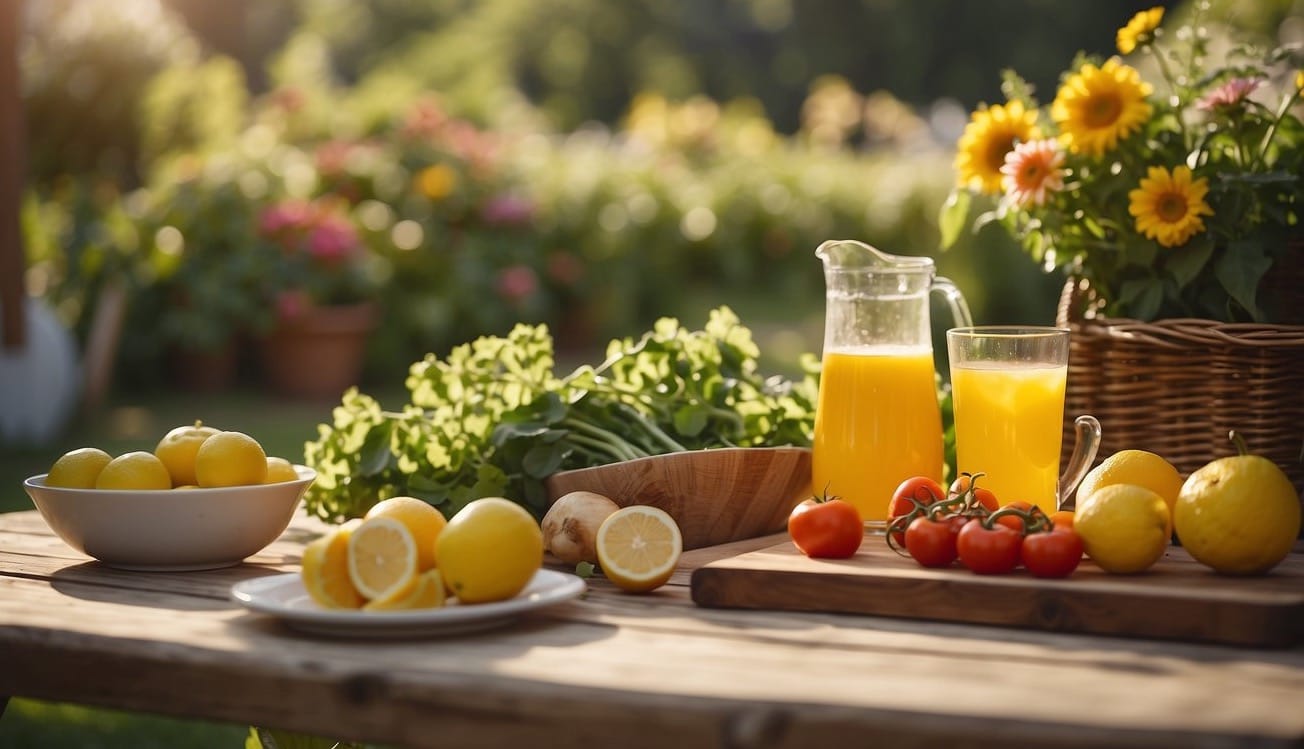
Proper harvesting ensures your efforts in maintaining an organic garden yield the best results. When harvesting vegetables, timing is vital; pick them when they are at peak flavor.
For instance, leafy greens should be harvested while tender and before they start to bolt. Root vegetables, like carrots and potatoes, are ready when they reach the desired size.
For fruit, observe color and firmness as indicators of ripeness. Tomatoes and peaches, for instance, should give slightly under pressure and have a vibrant, even color.
Certain fruits, such as apples and pears, can ripen off the plant, so it’s okay to pick them when they are just shy of full ripeness.
In your herb garden, frequent harvesting can actually promote further growth.
Clip herbs in the morning after the dew has dried but before the heat of the day for peak flavor and oil concentration. It is best to use or preserve herbs immediately for maximum freshness.
Flowers deserve attention too; they can be picked for bouquets or deadheaded to encourage more blooms. For cut flowers, select blossoms that are just about to open fully for a longer vase life.
| Harvest Tips | Benefits |
|---|---|
| Morning harvest | Maximizes flavor and storage quality |
| Peak ripeness | Ensures maximum taste and nutrition |
| Frequent clipping | Promotes growth in herb gardens |
Enjoying your garden's bounty goes beyond the immediate fresh eating; consider preserving surplus by canning, freezing, or drying.
This way, you get to enjoy the fruits of your labor throughout the year.
Frequently Asked Questions
Navigating the gardening world can be overwhelming for beginners, but with the right guidance, creating a flourishing garden is within your reach. Here's a curated list of frequently asked questions to help you kickstart your gardening journey.
How do I start gardening from scratch?
Begin by choosing a suitable location with ample sunlight and easy access to water. Test your soil to understand its type and pH level, then prepare it by adding organic matter or compost to enrich it.
What are the basic tools I need for starting a garden?
Your essential toolkit should include a spade, garden fork, hoe, hand trowel, watering can or hose, and pruning shears. These tools will assist in soil preparation, planting, and maintenance.
Which vegetables are recommended for a beginner to plant?
Consider planting vegetables like lettuce, radishes, tomatoes, cucumbers, and peppers. These are hardy, grow relatively quickly, and require standard care practices, making them excellent choices for novices.
What is the best way to layout a garden for the first time?
The best layout is one that takes into account the amount of space available, the sunlight received, and the growth habits of the plants chosen. Raised beds or in-ground plots with clear paths will provide structure and ease of access.
How can I manage pests and diseases in my starter garden naturally?
Implement preventive measures such as crop rotation, healthy soil practices, and choosing disease-resistant plant varieties. Attract beneficial insects that eat pests, and apply natural remedies like neem oil for pest control.
What are some effective strategies for soil preparation and improvement?
Add organic matter each season to maintain soil fertility. Use mulch to retain moisture and suppress weeds. Rotate crops annually to prevent soil depletion and reduce the risk of disease. Conduct regular soil tests to adjust pH and nutrient levels as needed.
